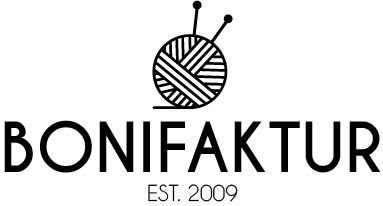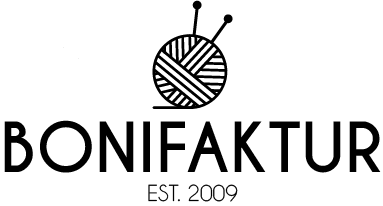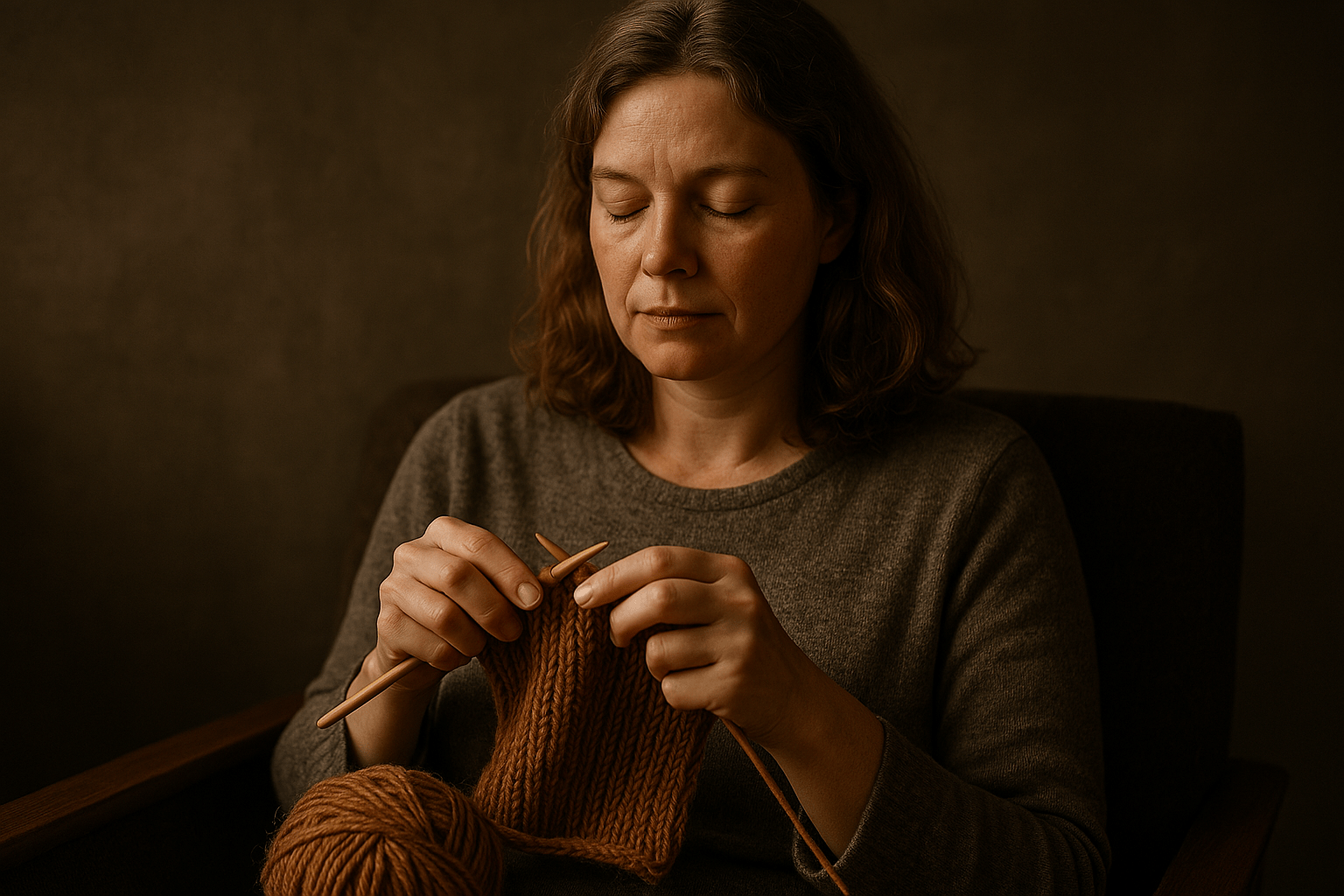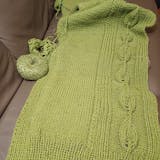Yarn with soul. For people with heart.
There's this special moment in knitting when the world around us becomes quieter. When our hands find their rhythm. When our breathing calms. When we arrive completely in the here and now – with every pull of thread, with every stitch that slips through our fingers.
In a time when mindfulness is often marketed as a trendy concept, knitting offers a primal, unadulterated form of meditation. No app is needed. No class to book. Just hands, needles, yarn—and a willingness to engage with the process.
At Bonifaktur, we believe that knitting is more than a hobby or a means to an end. It's a practice that can profoundly impact our well-being—a gentle mindfulness revolution in a time of constant distraction.
The presence of the hands
"The mind can only rest where the hands are busy." This ancient wisdom finds confirmation in modern neuroscience. The rhythmic, repetitive movement of knitting activates areas of our brain associated with calm and well-being, while gently anchoring our attention in the present moment.
Unlike many other everyday activities, in knitting there is no separation between planning and execution, between thinking and doing. The hands know what to do. They feel the thread, they guide the needles, they create stitch after stitch. This immediate connection between intention and action creates a state of natural presence.
Mindfulness teacher and physician Dr. Judith Orloff describes this type of "tactile meditation" as particularly valuable for people who struggle with traditional forms of meditation such as sitting still. The hands become the anchor of attention—concrete, tangible, immediate.
Bonifacture Practice: Before you begin knitting, take a moment to feel the yarn in your hands. Its texture, its weight, its warmth. Let your fingertips glide over the surface. This conscious touch attunes you to the presence inherent in the knitting process itself.
The rhythm of breathing
As we immerse ourselves in the flow of knitting, our breathing changes. It becomes deeper, more regular. Often, it unconsciously synchronizes with the rhythm of our hands. Inhale – pick up stitch. Exhale – pull yarn through.
This natural synchronization has profound effects on our nervous system. Regular, deep breathing activates the parasympathetic nervous system—the part of our autonomic nervous system responsible for rest and recovery. The heart rate slows, blood pressure drops, and stress hormones are reduced.
Meditation researcher Dr. Susanne Babbel points out that rhythmic, bilateral movements, such as those used in knitting, can be particularly effective in processing stress and even healing the effects of trauma. Regularly alternating between the right and left hands appears to promote communication between the brain hemispheres and release entrenched thought and emotional patterns.
Bonifacture practice: Consciously experiment with the connection between breath and knitting movement. Try picking up a stitch with each inhalation and pulling the yarn through with each exhalation for a row or a specific number of stitches. This conscious synchronization deepens the meditative quality of knitting.
The silence between thoughts
The human mind is restless. Thousands of thoughts pass through our consciousness every day—memories, plans, worries, fantasies. This constant inner activity is often so natural that we barely notice it—until we try to calm down.
Knitting offers a gentle, natural way to calm this flood of thoughts. Not by forcibly suppressing them, but by gently redirecting attention to the present moment, to the concrete activity of the hands.
The Zen teacher Thich Nhat Hanh speaks of the "anchor of mindfulness" – a concrete point of focus that helps us stay in the here and now. When knitting, numerous such anchors are available: the sound of the needles, the texture of the emerging fabric, the color nuances of the yarn, the movement of the fingers.
This concrete sensuality of experience makes it easier for the mind to find peace. Not by suppressing thoughts, but by gently returning to immediate experience whenever we lose ourselves in thought.
Bonifacture Practice: If you notice your mind wandering while knitting, gently return to your senses. Consciously listen to the sound of the needles. Feel the texture of the yarn between your fingers. Observe the colors and how they change in the light. This sensory anchoring is the core of knitting meditation.
Acceptance of imperfection
One of the most valuable lessons in knitting is dealing with mistakes and imperfections. Every knitter knows that moment: You discover a mistake several rows back. The temptation is great to unravel everything and start over. But sometimes you decide to let the mistake stand—as part of the work, as a sign of its handmade nature, as a reminder of the process.
This attitude corresponds to the core of mindfulness practice: the acceptance of what is, without an immediate impulse to change or correct it. The realization that imperfection is not a flaw, but an integral part of all creation.
In Japanese aesthetics, there is the concept of "wabi-sabi" – the beauty of the imperfect, the transient, the incomplete. A hand-knitted piece naturally embodies this aesthetic. It is not flawless like a machine-made product. It bears traces of the hand that created it, of the moment in which it was created.
This acceptance of imperfection can radiate from knitting into other areas of life. It teaches us a gentler, more loving attitude toward our own mistakes and limitations.
Bonifaktur practice: Instead of immediately correcting every mistake, take a moment to consider it. What story does it tell? What was going on inside and around you at that moment? Sometimes it's right to correct a mistake—and sometimes it's wiser to accept it as part of the whole.
The flow of time
The modern world is characterized by a linear, fragmented understanding of time. Time is "saved," "managed," and "used." We often live more in the future or past than in the present.
When we knit, we enter a different quality of time. Time is no longer measured by the clock, but by the rhythm of the hands, by the stitches forming, by growing patterns. It becomes cyclical instead of linear, fluid instead of fragmented.
The philosopher Henri Bergson distinguished between "measurable time" ( temps ) and "experienced time" ( durée ). Knitting introduces us to this durée —the qualitative, inner experience of time, in which an hour can pass like minutes or a moment stretches into eternity.
This altered experience of time has profound effects on our well-being. It temporarily frees us from the tyranny of the clock and reminds us of a more primal, natural way of experiencing time—one that's more in tune with our internal rhythms than with external demands.
Bonifaktur practice: Knit once without a watch, without a time limit, without a goal. Not to finish a specific piece or reach a certain number of rows. Simply for the sake of knitting. Feel how your perception of time changes when you let go of the pressure to "finish."
The transformation of mood
One of the most remarkable qualities of knitting is its ability to influence our mood. Numerous studies demonstrate the calming, stress-reducing effects of this activity. The rhythmic movement, the focused attention, the tactile stimulation – all of this contributes to reducing anxiety and increasing overall well-being.
But knitting can do more than just calm you down. It can also be a way to cope with difficult emotions. Psychologist Betsan Corkhill, who researches the therapeutic potential of knitting, describes how knitting can help regulate emotions—whether by distracting you from painful sensations or by allowing you to transform troubled feelings into creative energy.
The effect of knitting on depressive moods is particularly remarkable. The combination of rhythmic movement, successful completion of a task, and visible progress can have a significant impact on mood. Each completed row becomes a small success, each finished project a tangible proof of one's ability to act.
Bonifaktur practice: Keep a "mood diary" about your knitting. Briefly note how you feel before and after knitting. Which projects, which yarns, which patterns have a particularly positive influence on your mood? Over time, you'll recognize patterns and be able to use knitting even more consciously as a tool for your emotional well-being.
The connection to the community
Mindfulness is often understood as a purely individual practice—a journey inward, a retreat from the world. But true mindfulness also opens us to connection with others, to the web of relationships in which our lives are embedded.
Knitting has always had this communal dimension. From traditional knitting circles to modern knitting cafes, from online forums to charity projects, knitting connects people across generations, cultures, and life paths.
This connection has a special quality. Unlike in many other social contexts, the focus here is not on self-expression, but on shared activity, mutual learning, and the sharing of knowledge and experience. A form of community based on cooperation, not competition.
Sociologist Betsan Corkhill speaks of "social mindfulness"—the ability to be present in a community without losing oneself. Knitting groups offer an ideal space for this form of connection: shared silence, shared concentration, a rhythm that sometimes synchronizes involuntarily.
Bonifacture Practice: If you normally knit alone, try the experience of knitting together—whether in a local group or an online forum. Observe how your knitting practice changes when embedded in a social context. How does the community influence your rhythm, your concentration, your creativity?
The development of a practice
Like any form of meditation, knitting unfolds its deepest impact not as an occasional activity, but as a regular practice. It's not the duration of each knitting session that matters, but the consistency with which we return to this practice.
Developing a knitting practice means creating a dedicated space for this activity in your daily life. A physical space that invites knitting—with good lighting, comfortable seating, and easy access to materials. And a temporal space—regular moments dedicated to this activity, whether in the morning before starting the day, during your lunch break, or in the evening at the end of the day.
The quality of this practice lies not in the perfection of the resulting pieces, but in the attitude with which we approach it: an attitude of openness, presence, and devotion to the process itself.
The Zen master Shunryu Suzuki coined the term "beginner's mind" ( shoshin )—a posture of openness, curiosity, and freedom from preconceived notions, even in advanced practice. This attitude is the key to a fulfilling knitting practice: viewing each project as a new opportunity, each stitch as a fresh moment of encounter with the material, with the technique, with ourselves.
Bonifaktur practice: Create a "knitting altar"—a place that invites you to knit. This could be a special chair, a beautiful bowl for your current project, or a basket of carefully selected yarns. A place that signals to you: Here is space for presence, for creativity, for depth.
The transfer into everyday life
Perhaps the most valuable dimension of knitting as a mindfulness practice lies in its ability to extend beyond the actual knitting time. The qualities we cultivate in knitting—presence, patience, acceptance, focus—can gradually flow into other areas of life.
Psychologist Ellen Langer, a pioneer in mindfulness research, describes mindfulness not as an isolated practice, but as a fundamental attitude of openness and attention to new information. An attitude we can cultivate in every activity—from washing dishes to having a conversation, from taking a walk to working on the computer.
Knitting can be an introduction to this mindful approach to life—an activity whose sensory concreteness and natural rhythm are particularly suited to bringing us into the present moment. A practice that allows us to experience and deepen the quality of attention, which we can then carry into other areas of life.
Bonifacture Practice: Try consciously transferring the quality of attention you experience while knitting to an everyday activity—be it preparing a meal, walking a familiar route, or listening to a conversation. Observe how the experience of this activity changes when you give it the same level of present attention as you do to your knitting project.
At Bonifaktur, we see knitting not just as a hobby or craft, but as an art of living. A practice that helps us stay present in an accelerated world. That allows us to connect with a deeper layer of existence through our hands. That reminds us of what truly matters: not perfection, but presence. Not quantity, but quality. Not speed, but depth.
Our yarns, our dyes, our patterns are more than products—they are invitations to this practice. Tools for a journey that leads not only to beautiful objects, but to a deeper connection with ourselves, with the material, with the moment.
In a world constantly striving for the new, the fast, the effective, the quiet concentration of knitting isn't old-fashioned—it's revolutionary. A gentle but effective rebellion against the distraction of our attention, against the alienation of our hands, against the loss of the moment.
Knitting is meditation in motion. A practice of presence, stitch by stitch.
Where every stitch is a decision for beauty.






Color Stories: How colors influence our knitting projects and our mood